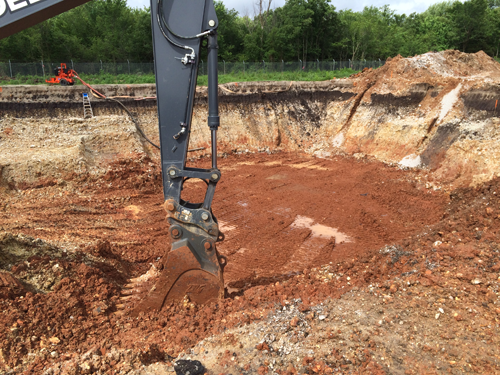Pools Prairie Superfund Site, Manufacturing Plant Area (MPA) - OU4, Neosho, Newton County, Missouri - Fact Sheet, October 2016
EPA Provides Update on Removal Activity
INTRODUCTION
In response to public requests, EPA Region 7 has compiled this fact sheet to provide updated information on recent and continuing removal activity at the Pools Prairie Superfund Site’s Operable Unit 4 (OU4), Neosho, Mo.
BACKGROUND
This Superfund site was discovered in July 1994 as a result of investigation into a citizen's complaint about gasoline contamination in a well located west of Highway 71 on Quince Road, southwest of the Neosho city limits. Numerous studies conducted since 1994 have indicated the presence of thousands of pounds of solvent-related compounds in multiple areas of the site. Causes of the contamination (primarily trichloroethylene or TCE) have included placement of waste solvent into unlined lagoons, leaks of solvent from manmade structures, and use of the solvent for weed control.
One of the source areas that contributed to the contamination was the Manufacturing Plant Area (MPA), otherwise known as Operable Unit 4 (OU4). The area was used for various activities associated with the testing, manufacturing, overhauling, and storage of rocket engines, jet engines, and associated components.
CLEANUP OBJECTIVES AND METHODS
- Former TCE Storage Area
- Former Railroad Spur Area
- Chemical Storage Area
- Former Surface Impoundment Area
EPA's short-term and long-term objectives at the Pools Prairie Site include restoring groundwater to beneficial use, if possible, and preventing any further human exposure to contaminants.

The SVE applies a vacuum to soil via a series of pipes buried in the ground. This vacuum pulls air through the soil, which then allows underground solvents to be removed from the subsurface.
The biovent system pulls ambient air from the atmosphere and forces it underground via a series of pipes, wells and a large air compressor. This air is then used by aerobic microorganisms living in the soil, which allows them to flourish and subsequently use the trapped solvents as a source of food, effectively reducing the concentration of subsurface soil contaminants with minimal disturbance.
Landfarming is a treatment technique that involves bringing contaminated soils or material to the surface, or into treatment cells, where it is frequently turned, or tilled, to allow aeration.
ONGOING WORK
The source removal action to address source area contaminants at the MPA began in spring 2015 using a combination of the three different processes to achieve cleanup goals.

ADDITIONAL INFORMATION
Site documents are available for the public to review at the following locations:
If you have questions or need additional information, please contact:
EPA Region 7
11201 Renner Boulevard
Lenexa, KS 66219
Phone: 1-800-223-0425
Email: [email protected]
